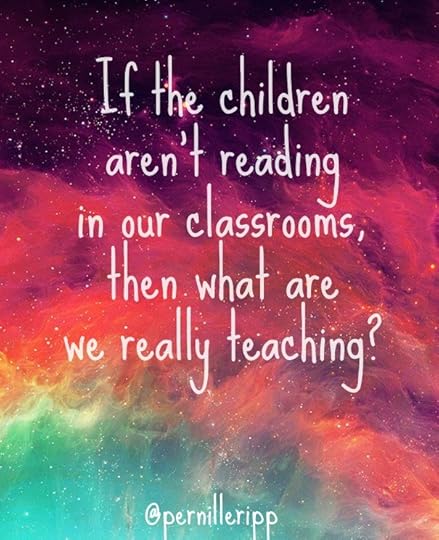As We Plan Our Reading Classes

We start almost every single day with 10 minutes of reading in our classroom. With 10 minutes dedicated just to eye on eye on text. With 10 minutes dedicated to the noble pursuit of falling into a great story. I wish we could dedicate more time, but teaching 45 minute English blocks, means that 10 minutes is all I have been able to give so far. To an outsider it may look like not much teaching happens, like there must be more important things to do than just the solitary pursuit of story. In fact, when I first started embracing independent reading time, I remember making excuses to my principal as to why I wasn’t teaching more at the time. I am sure he didn’t need the excuses, but I thought he did. And that’s it, isn’t it. We mistakenly think that when students are sitting in silence, hopefully immersed in a book, that we are not doing our job as teachers. That we are somehow not fulfilling our responsibility or promises.
So we cram as much other stuff into our English classes and leave independent reading time for those days where we have the time. We plan our lessons down to the last-minute and plan for reading last so that it becomes a reward at the end if we get through everything else. We plan for it once a week or every couple of days hoping that that is enough and then we sacrifice the time set aside the minute we must cover something else. Our independent reading time is hardly ever sacred because it doesn’t look like real teaching.
Yet when we speak of developing readers. When we teach reading. When we teach English; silent sustained reading time with support should be the very first thing we plan for. The very last thing we sacrifice. Our independent reading time should be the one thing that does not get cut. The one thing that we must fit everything else around. This is not just a fancy notion, it is research based, just see this post that the incredible Donalyn Miller took the time to put together. There is so much research out there supporting the notion of every child needing time to read in school that entire books have been written to defend it. (Here’s just one of them!). And if you are an administrator reading this, you are instrumental in making this happen.
I get it too. I already feel the panic of the upcoming year and all of the things we should experience. I already get nervous when I look at how few days we really have together and just how much we have to do. Yet in the past many years as a teacher of reading and English, the time to read has been the one thing that has made the biggest difference. So we can hope that our students will read outside of our classrooms, perhaps they all will, or we can make sure that we give them the one thing that is the most important in our instructional time; time to read. Time to find a book. Time to develop a reading life. We can assign reading, we can punish those who don’t, or we can simply build our classes around the need for reading, even if we teach in incredibly small blocks of time.
Independent reading time should be a right for all children in English, not just for those who got through whatever they needed to get through. It should be a guarantee for all of the children that enter our doors, much like those who enter a science classroom know that they will, indeed, do science. So why is reading any different?
I am currently working on a new literacy book, two separate literacy books. While the task is daunting and intimidating, it is incredible to once again get to share the phenomenal words of my students as they push me to be a better teacher. The book, which I am still writing, is tentatively Passionate Readers and will be published in the summer of 2017 by Routledge. So until then if you like what you read here, consider reading my book Passionate Learners – How to Engage and Empower Your Students. Also, if you are wondering where I will be in the coming year or would like to have me speak, please see this page.
Filed under: being a teacher, Literacy, Reading, Reading Identity, students





